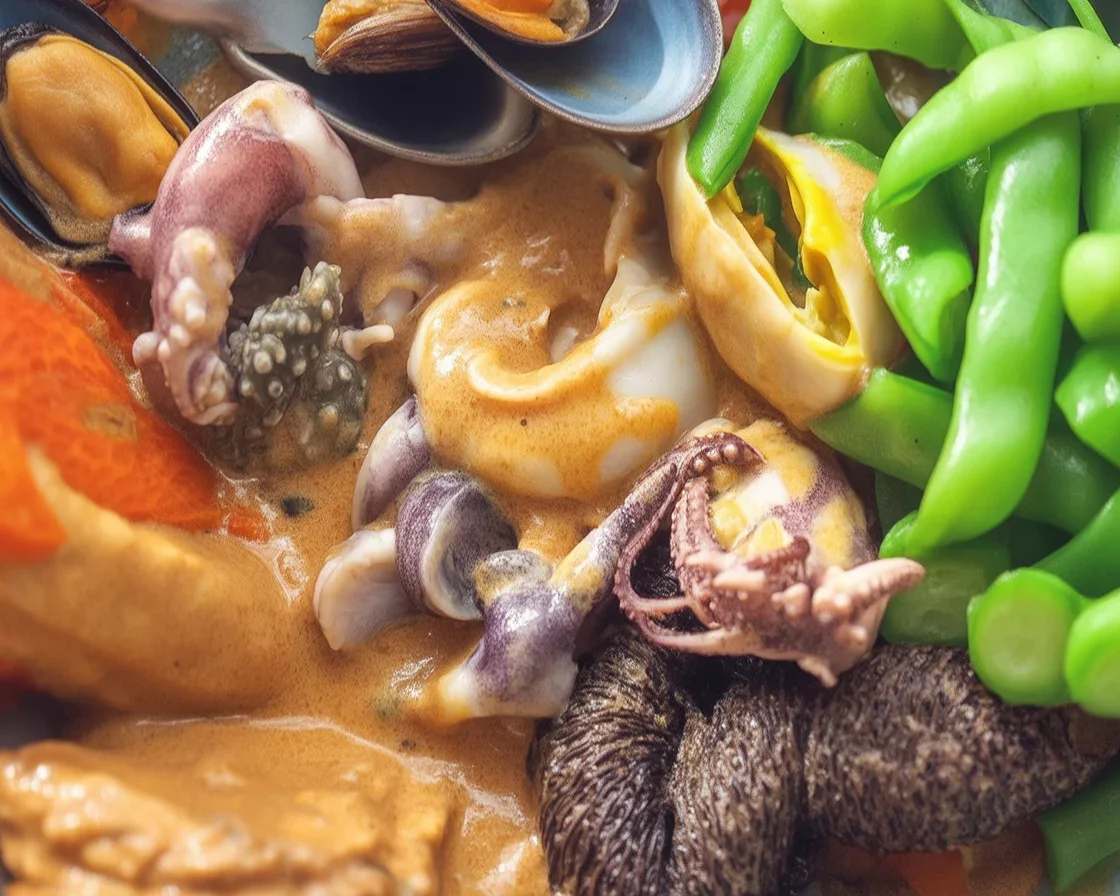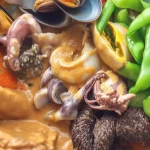Ever find yourself craving comfort food with a bit of “wow” — but also secretly want an excuse to eat shrimp and crab in one glorious dish? Filipino seafood kare kare solves that delicious problem. Got picky eaters or folks new to seafood? Totally hear you. (My nephew runs at the mention of crab, but even he’s scooping seconds after that peanut sauce hits.) And if you love exploring Filipino dishes, you’ll probably enjoy this as much as other Filipino classics like bulanglang or kid-friendly meals you can find [here]. Want something healthy but still rich and homey? Seafood kare kare is your five-star-in-your-own-house answer — I’m not even exaggerating. If you’re searching for a new weeknight hero, or something to shake up Sunday lunch, buckle up. You might never go back to standard beef kare kare after this one. 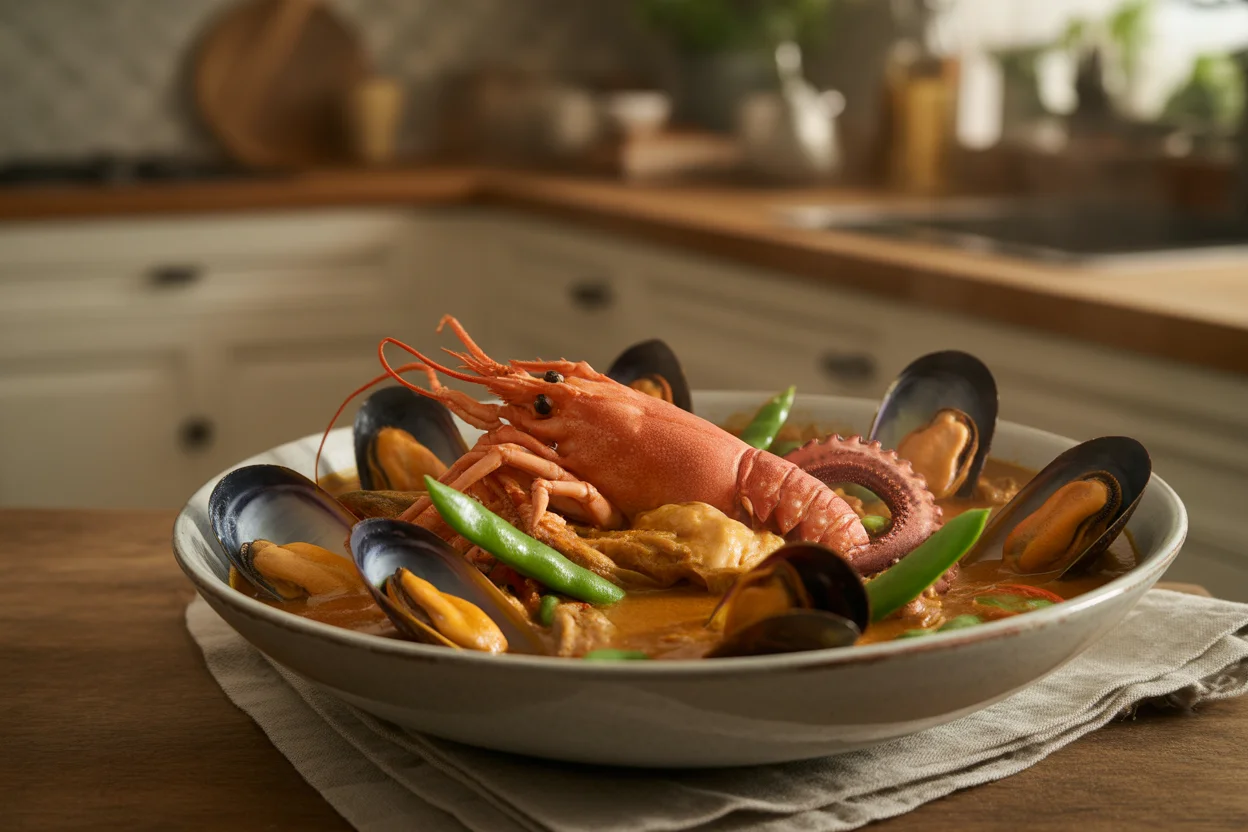
Overview of seafood kare kare
So, what even is seafood kare kare? It’s a Filipino stew that usually features a super rich, creamy peanut sauce. Traditionally, it’s made with oxtail or tripe but seafood versions are gaining traction (okay, some purists purse their lips — but they’re missing out). Imagine sweet prawns, juicy crab, and that thick sauce blanketing everything, with veggies lounging on top. This dish honestly feels like a celebration every time I make it — even just for myself.
The first time I tried seafood kare kare was at my uncle’s birthday in Cavite. Giant prawns. Blue crab so big it didn’t fit the pot. I thought, “No way does peanut and crab work,” but oh my, I was completely wrong. Now it’s an essential on my craving-list, and you don’t need fancy skills to pull this off.
Think of it like this: perfect comfort food when you’re tired of stews like adobo (which also has fifty billion variations, by the way, [see here]). If you love nutty flavors, or just want to impress your guests, make seafood kare kare. You’ll see what the fuss is about. 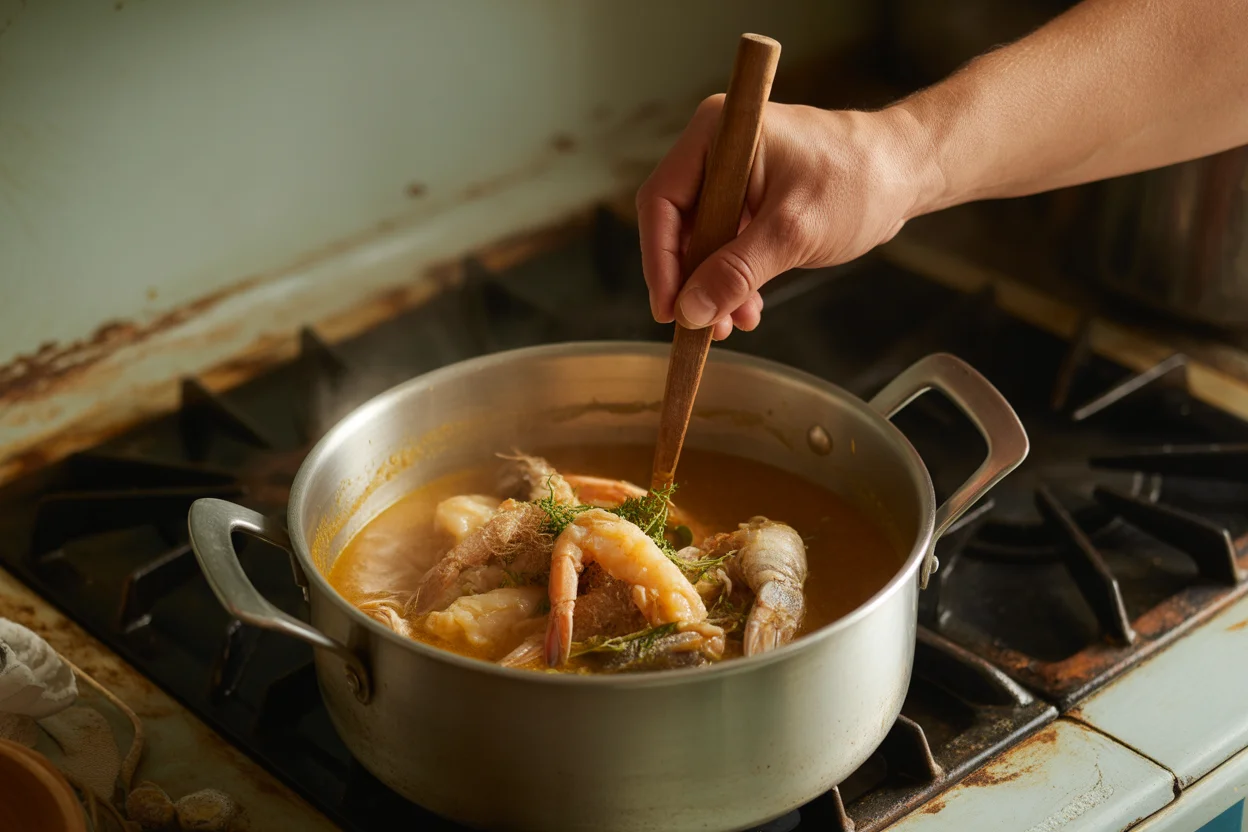
Preparing seafood
Alright, let’s talk about the seafood part. This makes or breaks the dish, honestly. For seafood kare kare, fresh is best but frozen works when you’re in a pinch (been there). Pick large shrimp with shells if you can. The shells pack extra flavor, especially when simmered. Crab? Blue crab is my top choice. But whatever’s in your market or what you’ve got — run with it!
Real talk: cleaning seafood isn’t glorious. Wear gloves, don’t rush. Rinse shrimp in cold water, devein with a toothpick (Mom’s trick, never fails), and scrub crab shells till they shine. If you want to use squid or mussels, go for it — that’s what’s great about this dish, it flexes to whatever you like.
By prepping everything ahead, you avoid frantic last-minute hand-washing (or, yikes, shell bits floating in your stew). My number one tip: have a “discard” bowl ready for shells and whatnot. Kitchen chaos is not the vibe for seafood kare kare day. 
Making peanut sauce
This is where the magic happens, folks. I could eat spoonfuls of the sauce by itself — no shame. Peanut sauce for seafood kare kare comes together quickly if you cheat a little (and I always do). Use chunky or smooth peanut butter, doesn’t matter. Some folks swear by grinding roasted peanuts in a mortar. Me? Whatever’s in the pantry works.
Start by sautéing garlic and onions in a big pot. Let them get golden and fragrant — your kitchen will smell like payday. Stir in your peanut butter (or crushed peanuts), then pour in a little annatto water for that classic golden-orange color. No annatto? Turmeric or paprika is fine, but don’t stress it. Mix in fish sauce or bagoong for an extra punch. The sauce thickens as it simmers, so keep whisking to avoid clumps (trust me). Taste as you go. If you want it richer, add more peanut butter. Too thick? Splash in more water or a bit of your shrimp stock.
That’s it. Keep it simple, don’t overthink, and you’ll get that restaurant-level sauce every time.
“I was nervous to try seafood kare kare because I thought the peanut sauce would be weird with shrimp, but it turned out creamy, balanced, and just amazing! Even my picky teens asked for seconds.”
Adding vegetables
Once you’ve got your seafood waiting and your peanut sauce bubbling, it’s veggie time. Seafood kare kare’s lineup usually beams with eggplant, string beans, and banana blossom. I throw in bok choy sometimes because why not? Slice veggies into chunky pieces so they don’t vanish into the stew.
Toss the harder vegetables (like eggplant and sitaw) in the simmering sauce first. Give them a head start — they need a couple more minutes to soften. Don’t add greens too early or they’ll look sad and slimy; bok choy or pechay goes in last and just blanches for a minute. Your seafood goes in even later since it cooks fast.
This whole layering gives each veg its moment to shine. Oh, and quick tip: don’t skimp on veggies — seafood kare kare is all about the balance. The result? Every scoop is loaded with color, crunch, and ocean goodness.
Serving
Now for the fun part — serving that glorious seafood kare kare. Proper serving takes it up a notch, trust me.
- Best with heaps of garlic rice (try this epic Filipino garlic fried rice). You need something to soak up all that sauce.
- Always serve with bagoong (fermented shrimp paste) on the side. Some sprinkle lemon juice, too — super underrated.
- Don’t forget a big bowl for discarded shells. Eating with your hands is basically required.
- This stew is ultra-rich, so fresh side salads or pickled veggies work as tasty resets between mouthfuls.
Family-style is how most Filipinos do it, right at the table. Dig in while it’s steaming, and don’t sweat the mess; seafood kare kare is worth dirtying your tablecloth for.
Regional variations
Alright, let’s clear up one thing: every family or region has its way with this dish. Over in Pampanga, some folks add coconut milk and make it extra thick and sweet. In Cavite, mussels end up in the mix. Down in the Visayas, they sometimes use local shellfish or even crab fat for the sauce — crazy but genius.
Some cooks go wild, tossing in squid, mussels, clams, or even lobster (if you’re that extra). Others go lighter, skipping crab and just bathing shrimp in the peanut blend. That’s the beauty of Filipino seafood kare kare — no single recipe rules them all. Pro tip: use what’s fresh and cheap near you, and never apologize for swapping ingredients. In my house, it’s whatever the market aunties push at me.
Oddly enough, my neighbor puts pineapple bits in hers. (Haven’t worked up the courage to try that yet.) I say, if you like it, go for it.
Tips
I’ve made seafood kare kare a bunch (sometimes flop, sometimes chef’s kiss) so, quick notes to boost your odds of success:
- Don’t overcook the seafood. Add it in last, simmer till just pink and done.
- If your peanut sauce looks lumpy, use a whisk or immersion blender. Smooth sauce = happy eaters.
- Make extra. Flavors improve after a night in the fridge and you’ll thank yourself for leftovers.
- Substitute veggies and seafood as needed. Mussels, clams, or even fish fillet sit well in kare kare.
Most important? Don’t stress. Seafood kare kare is meant to be enjoyed, not fussed over. Try it a few times and you’ll have your own signature riff in no time.
Common Questions
Do I have to use both shrimp and crab?
Nope! Use whatever seafood you’re into or have handy. Mix it up with mussels, squid, or even fish fillets.
Can I make seafood kare kare less rich?
Absolutely. Just use less peanut butter and thin out the sauce with seafood or veggie broth.
What’s a good side dish?
Always serve with hot rice. Garlic rice or plain steamed is non-negotiable in my house!
How long does seafood kare kare keep?
It’s best eaten fresh, but you can store leftovers in the fridge for up to two days. Reheat gently so the seafood doesn’t go tough.
Do I need bagoong?
You don’t need it, but honestly, it’s the perfect salty counterpoint to the creamy sauce. Give it a try!
Ready for Your Kare Kare Moment?
Look, if you haven’t tried Filipino seafood kare kare, you’re missing out on one of the best flavor combos from the Philippines. It’s got the wow factor for guests, but simple enough for any weeknight. Give it a shot using this Seafood Kare Kare Recipe – Panlasang Pinoy if you want another spin on it, or check out Seafood Kare-Kare for a Change – The Peach Kitchen for even more ideas. Don’t be afraid to get messy and make it your signature stew. Happy cooking — and hey, let me know how yours turns out. 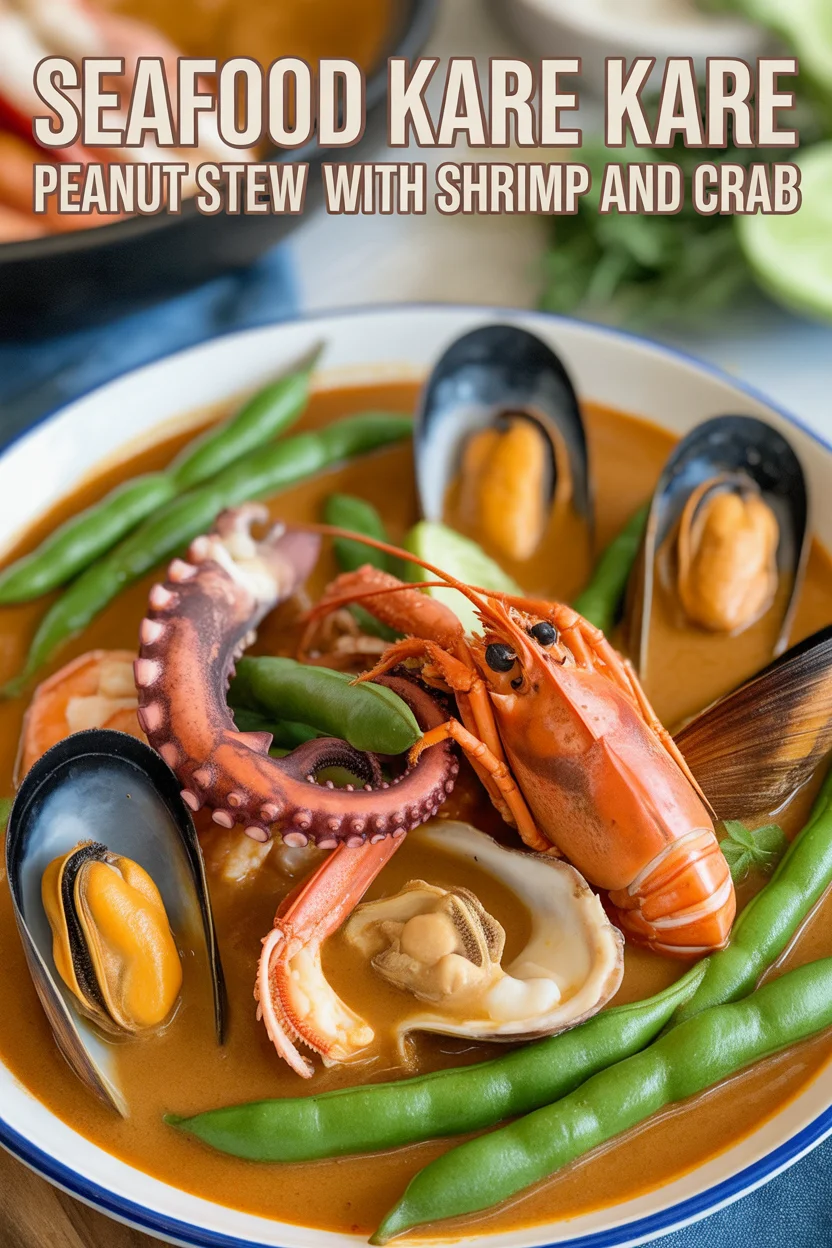
Seafood Kare Kare
Ingredients
Seafood
- 1 pound large shrimp with shells Fresh is best but frozen is acceptable.
- 1 pound blue crab Choose large crabs for best flavor.
Vegetables
- 1 medium eggplant Cut into chunky pieces.
- 1 cup string beans Also known as sitaw, cut into lengths.
- 1 cup banana blossom Sliced.
- 2 cups bok choy Add at the end to prevent overcooking.
Peanut Sauce
- 1 cup chunky or smooth peanut butter Use what you have on hand.
- 2 tablespoons fish sauce Or use bagoong for an authentic flavor.
- 1 cup annatto water For color, can substitute turmeric or paprika.
- 3 cloves garlic Minced.
- 1 medium onion Chopped.
Instructions
Preparation
- Clean and prep the seafood, ensuring to devein the shrimp and scrub the crab shells.
- Slice the vegetables into chunky pieces as described.
Cooking Peanut Sauce
- In a big pot, sauté minced garlic and chopped onion until golden and fragrant.
- Stir in the peanut butter and annatto water, mixing until well combined.
- Add fish sauce and allow the sauce to simmer, whisking to avoid clumps.
- Adjust thickness with water or shrimp stock as necessary.
Cooking Seafood and Vegetables
- Add the harder vegetables (eggplant and string beans) to the sauce and simmer for a few minutes.
- Add bok choy last and blanch for just a minute.
- Add the seafood, cooking just until they are pink and tender.
Serving
- Serve the seafood kare kare with garlic rice and bagoong on the side.
- Provide bowls for discarded shells and enjoy family-style.
